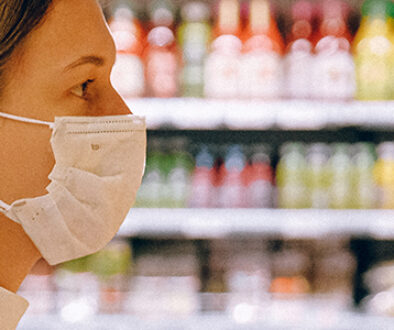Belgian Experts Assess Risk of Listeria Growth in Cheese
Experts in Belgium have said the risk of Listeria monocytogenes growth in fresh cheeses is low if the pH value is below a certain level by the end of the production process.
The Scientific Committee found, based on challenge tests, the growth of Listeria monocytogenes in soft and semi-hard cheeses cannot be excluded. Soft cheeses are a known risk product. Semi-hard cheeses present a potential risk for growth and this should be assessed on a case-by-case basis, according to the committee. These products are potentially unsafe for high-risk consumers such as pregnant women, young children, the elderly, and people suffering from certain underlying medical conditions.
A durability test with feta showed no growth but a single test is not sufficient to conclude that all feta cheeses are a low-risk product, said the experts.
Advice to Include pH Controls in HACCP
The Scientific Committee provides advice on risk assessment and management in the food chain for the Federal Agency for the Safety of the Food Chain (FASFC) in Belgium.
Correct implementation of Good Manufacturing Practices (GMP) and an adequate Hazard Analysis and Critical Control Points (HACCP) plan remains essential.
The committee recommended that pH controls at the end of the production process of fresh cheeses are included in the HACCP procedures as a control measure so that the operator can ensure a sufficient pH reduction of below 5 has occurred at this stage.
In advice from 2016, the committee made recommendations for challenge and durability tests for Listeria monocytogenes in cheese. On this basis, a study collected data from Belgian cheeses. The committee was then asked to evaluate the growth potential of Listeria in these cheeses.
Producer Survey and Market Study Findings
Production processes of Belgian cheeses and their characteristics were examined by a survey of 142 producers and a market study of 65 different kinds of cheese. The growth of Listeria in 32 kinds of cheese was studied by challenge tests.
In the producer survey, 424 different kinds of cheese were identified, most made in Wallonia but some in Flanders. Most Belgian farm cheeses are made from unpasteurized, raw milk but Flemish producers use pasteurized milk more frequently.
No growth was observed for fresh cheeses in the durability tests. Shelf life varied from seven to 19 days. The maximum pH value at the start of growth tests was 4.93 but a maximum pH of 5.5 was detected during the market study.
For soft cheeses, there was growth in seven of the eight. In two tests growth was significant at 3 to 5 log colony forming units per gram (cfu/g). The high pH values of these products may explain the development of Listeria.
For the semi-hard variety, there was a lot of variation in the growth potential of Listeria between products and between batches of the same cheese.
Experts advised that future durability studies with low initial concentrations of Listeria less than 10 cfu/g should also collect semi-quantitative data by doing isolations on smaller quantities such as 10-gram and 1-gram or by determining the most probable number of Listeria.
They also proposed the use of an initial contamination level below 1,000 cfu/g for durability tests to be able to effectively assess growth potential.
The committee has also published an opinion on the analysis program for phycotoxins (marine bioxtoxins) in food.
It focuses on matrices posing the main risk to the Belgian population such as oysters, mussels, and scallops. The committee recommended that attention should be paid to the sampling of crab and urged vigilance on emerging phycotoxins such as ciguatoxin and tetrodotoxin.
Experts recommended that the distribution and catering sector should also be included in sampling sites and studies on the identification and occurrence of phycotoxins in algae-based food supplements should be carried out.
Source: Food Safety News




